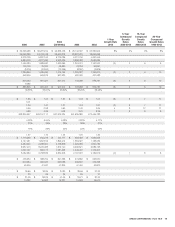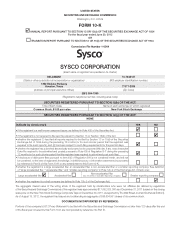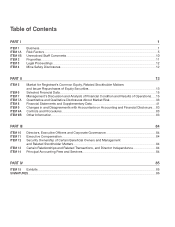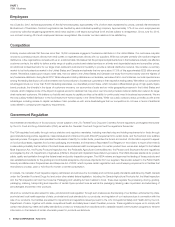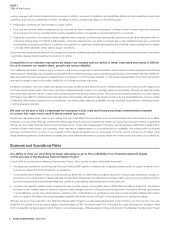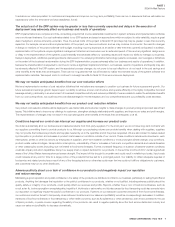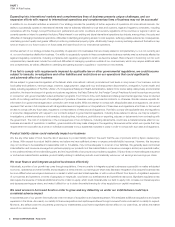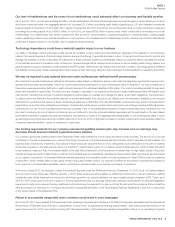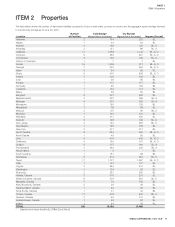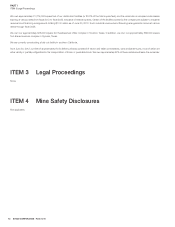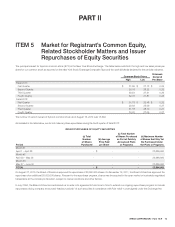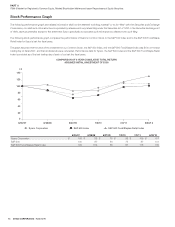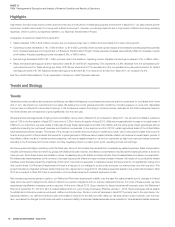Sysco 2012 Annual Report Download - page 31
Download and view the complete annual report
Please find page 31 of the 2012 Sysco annual report below. You can navigate through the pages in the report by either clicking on the pages listed below, or by using the keyword search tool below to find specific information within the annual report.SYSCO CORPORATION-Form10-K8
PARTI
ITEM1ARisk Factors
Expanding into international markets and complementary lines of business presents unique challenges, and our
expansion efforts with respect to international operations and complementary lines of business may not be successful
In addition to our domestic activities, an element of our strategy includes the possibility of further expansion of operations into international markets. Our
ability to successfully operate in international markets may be adversely affected by local laws and customs, legal and regulatory constraints, including
compliance with the Foreign Corrupt Practices Act, political and economic conditions and currency regulations of the countries or regions in which we
currently operate or intend to operate in the future. Risks inherent in our existing and future international operations also include, among others, the costs and
diffi culties of managing international operations, diffi culties in identifying and gaining access to local suppliers, suffering possible adverse tax consequences,
maintaining product quality and greater diffi culty in enforcing intellectual property rights. Additionally, foreign currency exchange rates and fl uctuations may
have an impact on our future costs or on future sales and cash fl ows from our international operations.
Another element of our strategy includes the possibility of expansion into businesses that are closely related or complementary to, but not currently part
of, our core foodservice distribution business. Our ability to successfully operate in these complementary business markets may be adversely affected by
legal and regulatory constraints, including compliance with regulatory programs to which we become subject. Risks inherent in branching out into such
complementary markets also include the costs and diffi culties of managing operations outside of our core business, which may require additional skills
and competencies, as well as diffi culties in identifying and gaining access to suppliers or customers in new markets.
If we fail to comply with requirements imposed by applicable law or other governmental regulations, we could become
subject to lawsuits, investigations and other liabilities and restrictions on our operations that could signifi cantly
andadversely affect our business
We are subject to governmental regulation at the federal, state, international, national, provincial and local levels in many areas of our business, such as
food safety and sanitation, minimum wage, overtime, wage payment, wage and hour and employment discrimination, immigration, human health and
safety, including regulations of the FDA, USDA, U.S.Occupational Safety and Health Administration, federal motor carrier safety, data privacy, environmental
protection, the import and export of goods and customs regulations, the False Claims Act, the Foreign Corrupt Practices Act and the services we provide
in connection with governmentally funded entitlement programs. From time to time, both federal and state governmental agencies have conducted
audits of our billing practices as part of investigations of providers of services under governmental contracts, or otherwise. We also receive requests for
information from governmental agencies in connection with these audits. While we attempt to comply with all applicable laws and regulations, we cannot
represent that we are in full compliance with all applicable laws and regulations or interpretations of these laws and regulations at all times or that we will
be able to comply with any future laws, regulations or interpretations of these laws and regulations. If we fail to comply with applicable laws and regulations
or encounter disagreements with respect to our contracts subject to governmental regulations, including those referred to above, we may be subject to
investigations, criminal sanctions or civil remedies, including fi nes, injunctions, prohibitions on exporting, seizures or debarments from contracting with
the government. The cost of compliance or the consequences of non-compliance, including debarments, could have a material adverse effect on our
business and results of operations. In addition, governmental units may make changes in the regulatory frameworks within which we operate that may
require either the corporation as a whole or individual businesses to incur substantial increases in costs in order to comply with such laws and regulations.
Product liability claims could materially impact our business
We, like any other seller of food, face the risk of exposure to product liability claims in the event that the use of products sold by Sysco causes injury
or illness. With respect to product liability claims, we believe we have suffi cient primary or excess umbrella liability insurance. However, this insurance
may not continue to be available at a reasonable cost or, if available, may not be adequate to cover all of our liabilities. We generally seek contractual
indemnifi cation and insurance coverage from parties supplying our products, but this indemnifi cation or insurance coverage is limited, as a practical matter,
to the creditworthiness of the indemnifying party and the insured limits of any insurance provided by suppliers. If Sysco does not have adequate insurance
or contractual indemnifi cation available, product liability relating to defective products could materially reduce our net earnings and earnings per share.
We must fi nance and integrate acquired businesses effectively
Historically, a portion of our growth has come through acquisitions. If we are unable to integrate acquired businesses successfully or realize anticipated
economic, operational and other benefi ts and synergies in a timely manner, our earnings per share may decrease. Integration of an acquired business may
be more diffi cult when we acquire a business in a market in which we have limited expertise, or with a culture different from Sysco’s. A signifi cant expansion
of our business and operations, in terms of geography or magnitude, could strain our administrative and operational resources. Signifi cant acquisitions may
also require the issuance of material additional amounts of debt or equity, which could materially alter our debt to equity ratio, increase our interest expense
and decrease earnings per share, and make it diffi cult for us to obtain favorable fi nancing for other acquisitions or capital investments.
We need access to borrowed funds in order to grow and any default by us under our indebtedness could have
amaterial adverse impact
A substantial part of our growth historically has been the result of acquisitions and capital expansion. We anticipate additional acquisitions and capital
expansion in the future. As a result, our inability to fi nance acquisitions and capital expenditures through borrowed funds could restrict our ability to expand.
Moreover, any default under the documents governing our indebtedness could have a signifi cant adverse effect on our cash fl ows, as well as the market
value of our common stock.


